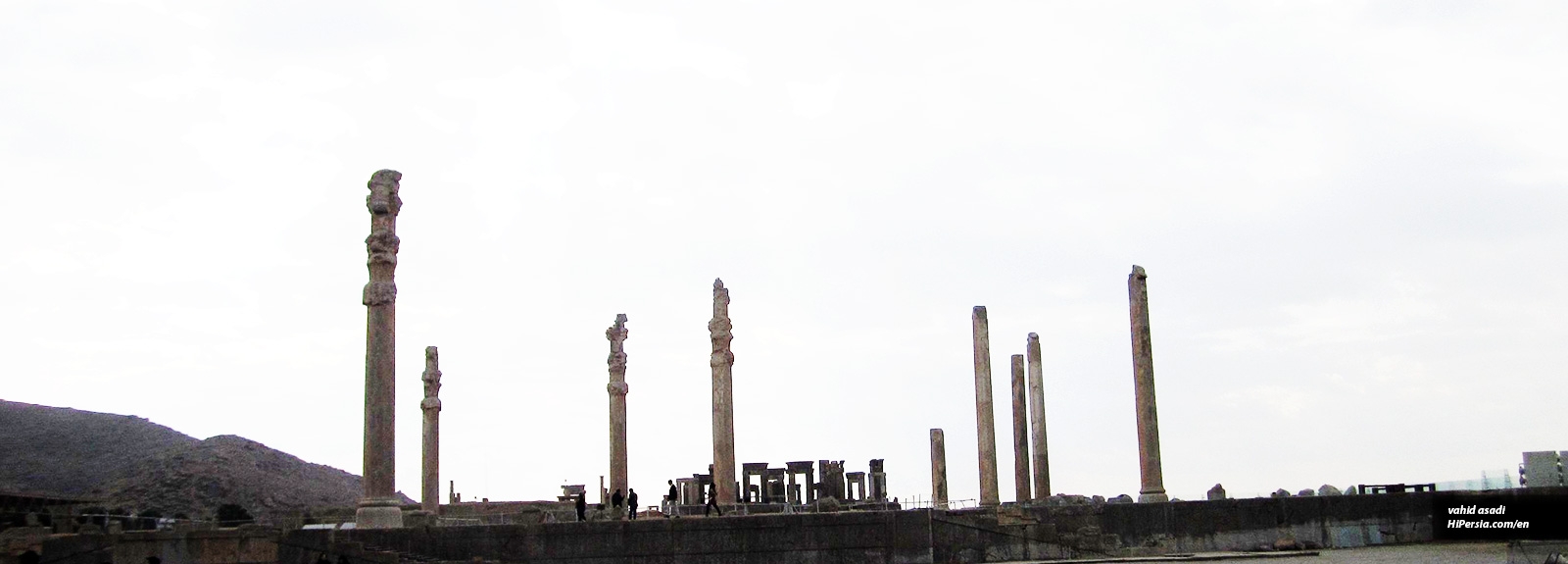



Apadana Palace is one of the oldest palaces of Persepolis. This palace is built on the orders of Darius the Great.
The Apadana Palace or the Palace of Darius and Xerxes is the oldest and, in terms of, the most glorious building of Persepolis. The construction of this palace began on the orders of Darius the Great about 515 BC. It lasted for 30 years, and it ended at the time of Xerxes' government. The gathering of the guests of the world's largest empire needed a grand and magnificent hall, and for this reason, Darius founded the Apadana Palace. Apadana, in terms of art, history, politics, and architecture, is the greatest palace of Persepolis and is the first Iranian building that used stone in its structure.

The palace has an area of 3660 square meters and has 36 pillars. Each side of the Apadana Palace is 60.5 meters. This magnificent palace includes a central quadrilateral hall with 36 columns, three verandahs in the north, east, and west directions (each with 12 columns), four towers in the four corners of the exterior hall, and a security room in the south. The level of the palace is about 3 meters above the Apadana courtyard. Wooden entrance doors covered with expensive metal and walls with colored bricks. The northeastern and southeast towers of the Apadana, the slats of golden and silvery discovered.
These slats are embedded in boxes. Darius has been pointing to the borders of his country with the accompaniment of Ahura Mazda on these slates.

The 72 pillars kept the ceiling of this magnificent palace, of which, unfortunately, nowadays remained only 14 of them. The pillars were 20 in 1619, and unfortunately, it has been destroyed or stolen over time. In each of the three porches, there are 12 stone pillars in two rows, supporting the ceiling of the palace. The approximate weight of each pillar was 85 tons, and its height was about 20 meters. On the eastern porch, every capital of the pillar is a legendary double lion face. The capital of the pillars of the western porch has a simple shape of a cow's head. There was a large wooden piece of cedar wood on each capital. On the boards of wood, another piece of wood was placed perpendicular to cover the ceiling. The pillars of the main hall were in the shape of the head of a cow, and the columns had 48 grooves. Columns painted with warm colors. The eyes, tongue, and nose of the cows were red. In boulders, animals' hoof have been golden, and also beards and hair were Lapis Lazuli stone.

Apadana staircases are an artistic masterpiece of Persepolis. Due to the height of the main hall, two large eastern and northern stairs from the floor of the yard entered the Apadana porch. On the carvings of these stairs, people from Achaemenid countries were lining up and giving gifts to the Iranian king.

The eastern staircase, as it lies beneath the soil, is much healthier than the northern staircase. On the two sides of the four eastern stairs, 229 armed soldiers were lining up with spears, arcs. The stairs to the north are carved with patterns of high-ranking military commanders and Persians with flowers of lotus.

The best time to travel to Shiraz is May, especially from the 15th to the end of the month. In May, spring reaches its highest beauty in almost all parts of Iran, but Shiraz really is paradise in this month. The Shiraz climate is so hot in summer. We suggest you do not go to Shiraz on hot summer days. Because you cannot visit all the historical monuments of Shiraz.
It is an hour's distance from Persepolis to the city center. To get to this point, we should be away from the city in a private car or a taxi for about 57 km. From Shiraz to Marvdasht, there are interurban minibuses and taxis; the terminal and the place of the park are at the terminal of Shahid Karandish at the intersection of the Shiraz Terminal.






“Oh! Squander not this breath that Heaven hath lent thee, Nor make too sure another breath to borrow!’” Khayam